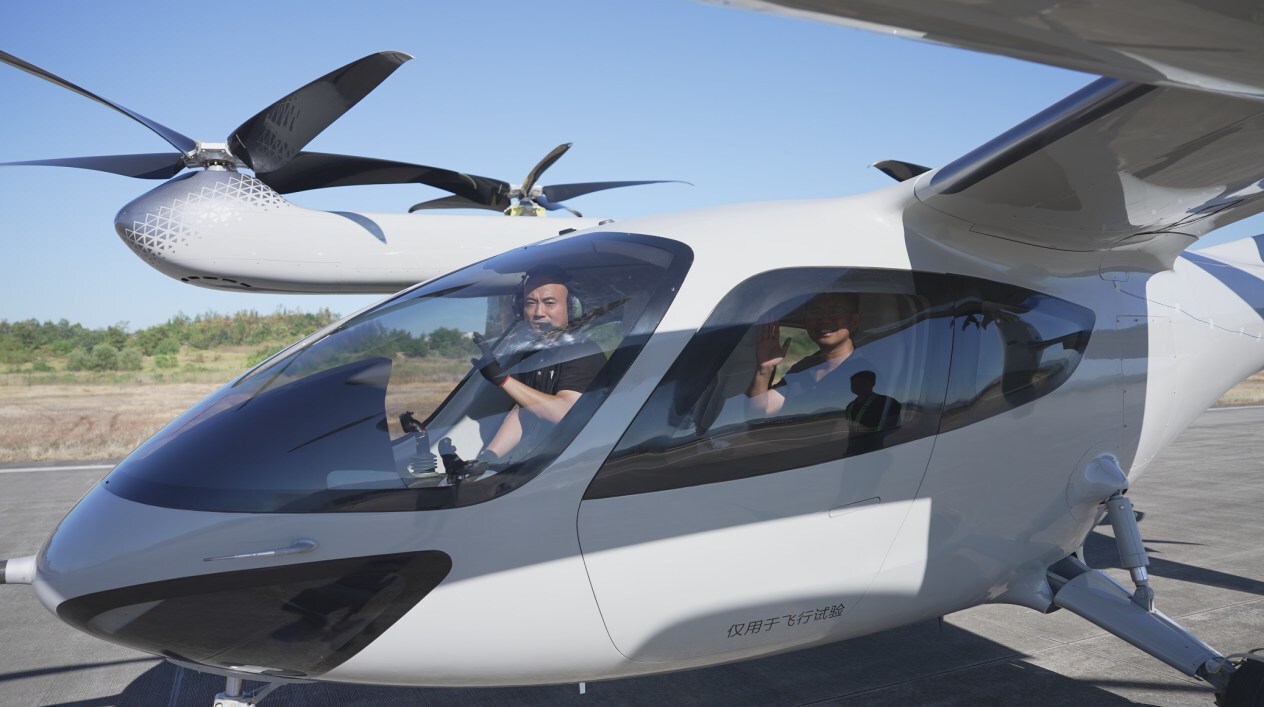Hong Kong’s Communications Authority launched a dedicated frequency band for unmanned aircraft operations on October 27, 2025, assigning the 1430-1444 MHz spectrum exclusively for drone communications. The spectrum allocation directly supports the low-altitude economy, an emerging industry encompassing urban air mobility, drone deliveries, emergency services, and infrastructure inspection operations conducted below 3,000 meters.
The 14 MHz frequency assignment provides drone operators with protected radio channels free from consumer device interference. Organizations participating in Hong Kong’s Low-Altitude Economy Regulatory Sandbox can now apply for UAS (Private) Licences, granting access to seven dedicated 2 MHz channels within the 1.4 GHz band. The infrastructure enables reliable communication links essential for scaling commercial drone operations from experimental flights to systematic deployment.
The 1430-1444 MHz band offers exclusive spectrum for drone telemetry, control, and video transmission. Hong Kong mirrors mainland China’s December 2023 frequency allocation, ensuring equipment compatibility across the border. Initial licensing limits access to the 38 approved regulatory sandbox pilot projects. Applications require Civil Aviation Department flight-path approvals and radio base-station details.
How Hong Kong’s 1.4 GHz Spectrum Allocation Works
The low-altitude economy requires a robust communication infrastructure to coordinate multiple aircraft operating simultaneously in dense urban airspace. Hong Kong’s spectrum allocation addresses this need by designating the 1430-1444 MHz band exclusively for unmanned aircraft systems. The Office of the Communications Authority structured the band into seven channels, each with a 2 MHz bandwidth, with center frequencies starting at 1431 MHz and stepping up in 2 MHz increments.
The channel plan matches mainland China’s implementation exactly. China designated the same 1430-1444 MHz band for drone use, effective January 1, 2024, under interim regulations separating the spectrum into segments for different applications. The 1430-1438 MHz portion handles video transmission for police unmanned aircraft and helicopters, while 1438-1444 MHz serves other drone operations. Hong Kong adopted identical technical parameters to maximize equipment availability and enable cross-boundary low-altitude economy operations.
Organizations seeking spectrum access must apply through the UAS (Private) Licence regime. Applications require three critical components: detailed information on the unmanned aircraft systems being operated, specific flight-path approvals from the Civil Aviation Department, and technical specifications for the planned radio base stations. The Communications Authority reviews each application individually and monitors spectrum usage to ensure compliance with licence conditions.
The controlled licensing approach differs from unlicensed bands like 2.4 GHz and 5.8 GHz, where consumer devices freely operate. Dedicated spectrum eliminates interference from Wi-Fi routers, Bluetooth devices, and other consumer electronics that crowd those frequencies. For low-altitude, economic applications requiring reliable communication over extended distances, protected frequencies offer operational advantages that unlicensed bands cannot match.
Why Dedicated Spectrum Drives Low-Altitude Economy Growth
Communication reliability defines success in the low-altitude economy. Urban air mobility operations conducting passenger transport, medical supply delivery, or infrastructure inspection cannot tolerate frequent signal dropouts. When drone operators share unlicensed spectrum with millions of consumer devices, interference becomes predictable rather than occasional. The 2.4 GHz ISM band spans approximately 80 MHz total bandwidth shared among countless Wi-Fi networks, Bluetooth devices, baby monitors, and RC equipment.
Scale compounds these challenges. A single recreational drone flight experiences manageable interference levels in shared spectrum. Dozens of commercial delivery routes operating simultaneously in the same urban airspace face systemic connectivity issues. Video quality degrades, control latency increases, and operators spend resources troubleshooting communications rather than executing missions.
Hong Kong’s 1.4 GHz allocation removes these constraints for low-altitude economy operations. Lower frequencies provide superior obstacle penetration compared to 2.4 GHz or 5.8 GHz signals. Radio waves at 1.4 GHz diffract around buildings and terrain more effectively than higher frequencies, maintaining connectivity through non-line-of-sight scenarios common in urban environments. Field deployments demonstrate that commercial transceivers operating in the 1.4 GHz band achieve 14-16 km of range for video transmission, exceeding the typical range of 2.4 GHz systems, which are limited to approximately 10 km in open conditions.
Technical specifications matter for professional applications. Commercial drone systems require bidirectional data links that simultaneously carry telemetry, control commands, and high-definition video. A 2 MHz channel supports control links and telemetry without difficulty, while equipment designed for the 1.4 GHz band typically handles 1080p video at 60 fps with approximately 80 milliseconds of latency. These parameters meet most industrial and commercial requirements in the low-altitude economy.
Hong Kong Follows China’s 1.4 GHz Drone Frequency Standard
Hong Kong’s spectrum allocation aligns strategically with mainland China’s low-altitude economic infrastructure. China projected the industry would reach 1.5 trillion yuan (approximately $210 billion) by the end of 2025 and grow to 3.5 trillion yuan by 2035. Shenzhen alone generated 21.38 billion yuan in value-added output from over 1,900 enterprises during the first half of 2025, representing 26.4% year-over-year growth. The city has completed more than 780,000 commercial drone sorties since 2023 across 203 active routes.
The deployment scale influenced mainland China’s decision to designate dedicated drone spectrum. The Office of the Communications Authority explicitly stated that Hong Kong adopted the same 1430-1444 MHz band and channel structure to ensure equipment availability and spectrum compatibility for cross-boundary operations. Equipment manufacturers already produce transceivers designed for China’s 1.4 GHz allocation. Hong Kong operators source these same systems without waiting for custom hardware development specific to the Hong Kong market.
Cross-boundary routes represent technically complex scenarios within the low-altitude economy. A drone flying between Hong Kong and Shenzhen must maintain communication links across two jurisdictions, each governed by separate civil aviation authorities and spectrum regulators. Identical frequency allocations eliminate one variable from the coordination challenge. The aircraft maintains the same radio frequencies throughout the flight rather than switching bands at the border.
The regulatory sandbox includes several cross-boundary pilot projects. Hong Kong appointed five venue partners to streamline testing: Hong Kong Science and Technology Parks, Cyberport, Hong Kong University of Science and Technology, University of Hong Kong, and Hong Kong Polytechnic University. These organizations provide physical testing grounds and reduce the administrative burden associated with negotiating individual site access for each low-altitude economy project.
Global Spectrum Fragmentation Creates Low-Altitude Economy Challenges
Hong Kong’s approach contrasts sharply with that of other significant markets developing low-altitude economic infrastructure. The United States Federal Communications Commission adopted rules in August 2024 enabling access to the 5030-5091 MHz band for drone control and non-payload communications. The 61 MHz allocation centered around 5 GHz uses frequency management rather than static channel assignments.
The U.S. system requires operators to request temporary frequency assignments through a management system coordinating with the Federal Aviation Administration for airspace deconfliction. The FCC initially provides access to a 20 MHz block in the center of the band during an interim phase while the entire management system is under development. Equipment must meet FCC certification standards, and rules specifically target non-networked, line-of-sight communications before addressing network-supported operations.
Europe presents another framework. No unified spectrum allocation exists across European Union member states for dedicated drone use supporting the low-altitude economy. Individual countries handle frequency assignments through existing civil aviation radio frameworks or experimental licences. The European Conference of Postal and Telecommunications Administrations discussed spectrum needs for unmanned aircraft, but regulatory fragmentation persists. Most European drone operations continue to rely on unlicensed ISM bands or on case-by-case frequency coordination.
The global divergence creates interoperability challenges for the low-altitude economy. A drone system designed for the U.S. 5030-5091 MHz allocation cannot operate in Hong Kong’s 1430-1444 MHz band without hardware modifications. Cross-border operations require aircraft supporting multiple frequency bands or operators maintaining separate equipment sets for different jurisdictions. The unmanned aircraft industry lacks a harmonized spectrum allocation comparable to that of cellular networks, which operate across standardized global frequency bands.
Regulatory Sandbox Tests Low-Altitude Economy Applications.
Hong Kong launched the first batch of 38 Low-Altitude Economy Regulatory Sandbox pilot projects in March 2025. These projects provide real-world operational data informing permanent regulatory frameworks. Applications span emergency rescue scenarios, delivering medical supplies; logistics operations, moving packages between distribution points; infrastructure inspection for power lines and buildings; and surveillance applications for public safety.
The sandbox structure addresses a challenge in the development cycle for early-stage aviation technology. Regulators require operational data before writing permanent rules, but operators need regulatory certainty before making substantial investments. The sandbox provides temporary approvals allowing selected participants to conduct real operations while regulators collect safety and performance data. The spectrum licensing follows the same logic by limiting initial access to the 1.4 GHz band to sandbox participants rather than opening applications to all drone operators immediately.
CLP Power exemplifies practical low-altitude economy deployment within the sandbox. The utility company began beyond-visual-line-of-sight trials in April 2025 at a test site in Sai Wan, Sai Kung, inspecting overhead power lines. The Civil Aviation Department relaxed existing restrictions on BVLOS operations to enable drones to fly beyond the pilot’s line of sight. CLP Power submitted four inspection routes covering facilities in sparsely populated areas and urban districts, and conducted test flights under different scenarios, including manual remote-pilot operation and automated inspection.
Chief Executive John Lee emphasized at the sandbox launch that the low-altitude economy represents “new quality productive forces” that are creating growth engines for Hong Kong’s broader economy. The government is committed to formulating dedicated legislation for unconventional aircraft over 150 kg, designating spectrum by year-end 2025, and planning infrastructure, including vertiports, air route networks, and intelligent traffic management systems.
What Vertiports Mean for Low-Altitude Economy Infrastructure
Vertiports represent critical physical infrastructure enabling the low-altitude economy. These specialized facilities accommodate electric vertical takeoff and landing aircraft in urban and suburban areas. A vertiport includes landing pads, takeoff areas, battery charging infrastructure, weather protection, passenger waiting facilities, and connections to ground transportation networks.
The European Union Aviation Safety Agency defines vertiports as areas of land, water, or structure used for landing and takeoff of vertical takeoff and landing aircraft. Three variants exist based on complexity and capability. Vertihubs represent the most developed form, featuring multiple takeoff, landing, and parking areas, as well as maintenance facilities and retail space. Vertibases are installed on existing building roofs with lower construction costs but reduced capabilities compared to vertihubs. Vertipads offer the simplest configuration, with a single takeoff and landing area and limited parking or maintenance space.
Hong Kong’s low-altitude economy action plan acknowledges vertiports as essential infrastructure requiring substantial investment and coordination across government departments and private stakeholders. Finding suitable locations that meet aviation safety requirements while remaining accessible for commercial operations involves coordination among the Civil Aviation Department, urban planning authorities, and private developers. Every square meter carries premium value in Hong Kong’s dense urban environment, complicating site selection for landing facilities.
Three-dimensional airspace management presents unique challenges for the low-altitude economy. Traditional commercial aviation operates at discrete altitude bands with substantial vertical separation. Low-altitude operations pack more aircraft into smaller airspace volumes, often flying different routes that cross at various altitudes. Traffic management systems must coordinate these movements in real time while maintaining safety buffers and handling off-nominal scenarios such as communication failures or weather diversions.
Economic Projections Driving Low-Altitude Economy Investment
Global projections consistently point to substantial growth in the low-altitude economy. The urban air mobility market is projected to expand from $4.6 billion in 2024 to $23.5 billion by 2030, reaching $41.5 billion by 2035, according to industry forecasts. The drone communication market, encompassing radio systems and network infrastructure enabling these operations, stood at around $2.5 billion in 2024 and reached $3.67 billion by 2029.
Hong Kong positions itself as an “Asia-Pacific hub for innovative low-altitude applications” within policy documents. The government established a task force, through the Insurance Authority, to develop insurance products specifically for low-altitude economic scenarios. The comprehensive approach addresses infrastructure beyond spectrum allocation, recognizing that communication frequencies represent one element within a larger ecosystem.
The low-altitude economy requires satellite positioning systems functioning at low altitudes in dense urban environments, three-dimensional spatial data platforms for route planning, air route networks coordinating multiple aircraft, and physical vertiport infrastructure. Legislative amendments published in May 2025 introduced provisions facilitating trials of unconventional aircraft weighing over 150 kg, enabling emerging low-altitude economy technologies to undergo testing under specified conditions while meeting aviation safety requirements.
Regional momentum accelerated throughout 2025. In July, 24 Asia-Pacific states and administrations jointly launched reference materials for regulating air taxis and drones. The collaboration represents the first time regulators in a specific region developed unified frameworks adaptable to individual national contexts. The reference materials cover certification processes, entry-into-service regulations, inter-agency cooperation, economic policies, capability development, and social acceptance for eVTOL aircraft.
Technical Realities Behind 1.4 GHz Selection
The 1.4 GHz band occupies a strategic position in the electromagnetic spectrum for low-altitude economy applications. Lower frequencies generally provide better range and obstacle penetration but require larger antennas and components. Higher frequencies enable higher data rates and smaller hardware, but they also lead to faster signal attenuation and reduced obstacle penetration.
Radio propagation physics indicates that 1.4 GHz offers advantages over 5.8 GHz in urban environments where low-altitude operations are everyday. When radio signals encounter buildings, trees, and terrain features, lower frequencies diffract around obstacles more effectively than higher frequencies. A 1.4 GHz signal maintains connectivity in more non-line-of-sight scenarios than a 5.8 GHz signal, explaining why regulators prefer the band for applications like logistics deliveries or medical supply transport in areas with limited line-of-sight conditions.
The narrow 14 MHz allocation limits the number of simultaneous operations the spectrum supports. Seven 2 MHz channels appear adequate for initial sandbox projects, but scaling to hundreds of daily commercial flights across Hong Kong’s airspace will require careful frequency reuse planning and coordination. Frequency management similar to the U.S. implementation for the 5 GHz band might eventually become necessary to maximize spectral efficiency as the low-altitude economy matures.
Channel bandwidth affects system capabilities within the low-altitude economy. A 2 MHz channel handles control links and telemetry data without difficulty, but high-definition video transmission benefits from wider bandwidth. Equipment designed for the 1.4 GHz band typically supports 1080p video at 60 fps with a latency of around 80 milliseconds. Performance is acceptable for most industrial and commercial applications, but it constitutes a compromise compared to the higher data rates possible at 5.8 GHz with wider channel spacing.
Equipment Manufacturers Face Multi-Band Requirements
Global fragmentation in drone spectrum allocations is pushing manufacturers toward multi-band solutions that support the low-altitude economy across different markets. DJI and other major producers already build drones that operate on 2.4 GHz, 5.2 GHz, and 5.8 GHz, with automatic frequency switching. Adding 1.4 GHz support to high-end commercial and industrial models becomes the next logical step as more jurisdictions allocate dedicated drone spectrum.
For organizations accepted into Hong Kong’s regulatory sandbox, the 1.4 GHz allocation removes technical uncertainty. They invest in communication equipment, knowing the frequency assignment remains stable rather than competing for access in unlicensed bands crowded with consumer devices. The Communications Authority monitors usage to ensure compliance, but approved operators receive dedicated spectrum to support reliable low-altitude economic operations.
Equipment manufacturers weigh Hong Kong’s market size against development costs. The Hong Kong market alone doesn’t justify developing new hardware specifically for 1.4 GHz operations. The combined mainland China and Hong Kong market does. China designated the same band effective January 2024 and deployed low-altitude economy infrastructure at scale across multiple provinces. Manufacturers producing 1.4 GHz transceivers for the mainland market sell those same systems in Hong Kong with minimal adaptation.
Cross-border operations create specific technical requirements for the low-altitude economy. A drone flying between Hong Kong and Shenzhen maintains communication links in both jurisdictions. Identical frequency allocations simplify the scenario compared to situations requiring aircraft to switch bands at borders. The regulatory sandbox includes cross-boundary routes as technically complex application scenarios, suggesting the government anticipates these operations becoming commercially significant within Hong Kong’s low-altitude economy development.
Timeline of Hong Kong’s Low-Altitude Economy Spectrum Development
Understanding Hong Kong’s spectrum allocation requires recognizing the developmental timeline:
December 2023: Mainland China designated the 1430-1444 MHz band for drone use under an interim arrangement
January 2024: China’s 1.4 GHz drone spectrum allocation took effect
January 2025: Hong Kong Office of Communications Authority completed industry consultation on 1.4 GHz band allocation for mobile service unmanned aircraft use
March 2025: Hong Kong launched the first batch of 38 Low-Altitude Economy Regulatory Sandbox pilot projects
May 2025: Legislative amendments published enabling trials of unconventional aircraft over 150 kg
June 2025: Existing fixed-link microwave systems migrated from the 1430-1444 MHz band, clearing the spectrum for drone allocation
July 2025: Amendments to the Small Unmanned Aircraft Order and Air Navigation Order took effect mid-July
October 27, 2025: Communications Authority launched UAS (Private) Licence regime, opening applications for 1.4 GHz spectrum access
The timeline demonstrates coordinated policy development across multiple government agencies. The Transport and Logistics Bureau managed the regulatory sandbox, the Civil Aviation Department handled airspace and flight approvals, and the Communications Authority controlled spectrum allocation. The low-altitude economy required synchronized action across these jurisdictions.
Comparison: Global Drone Spectrum Allocations
| Region | Frequency Band | Bandwidth | Management Approach | Status |
| Hong Kong | 1430-1444 MHz | 14 MHz | Licensed channels, sandbox participants | Active October 2025 |
| Mainland China | 1430-1444 MHz | 14 MHz | Licensed channels, segmented by application type | Active January 2024 |
| United States | 5030-5091 MHz | 61 MHz | Frequency management, FAA coordination | Active August 2024 |
| European Union | No unified band | Varies | National frameworks, case-by-case coordination | Fragmented |
What low-altitude Economy Operators Need to Know
Organizations planning to apply for UAS (Private) Licences supporting low-altitude economy operations must prepare specific documentation. Applications require comprehensive information on unmanned aircraft systems, including technical specifications, operational parameters, and details on communication equipment. The Civil Aviation Department must approve specific flight paths before spectrum applications proceed. Radio base station plans require technical information, including locations, antenna configurations, power levels, and coverage areas.
The Communications Authority reviews applications individually rather than issuing blanket approvals. The case-by-case assessment enables regulators to evaluate spectrum efficiency and identify potential interference issues before granting licences. Approved operators are subject to ongoing monitoring, ensuring compliance with licence conditions and effective spectrum utilization.
Current eligibility restricts applications to organizations participating in the Low-Altitude Economy Regulatory Sandbox pilot projects. The government selected 38 projects covering diverse applications, including emergency rescue, logistics delivery, infrastructure inspection, and surveillance operations. The controlled rollout allows regulators to gather operational data before potentially expanding eligibility for broader commercial deployment, supporting Hong Kong’s ambitions for a low-altitude economy.
The licensing approach provides operational certainty unavailable in unlicensed spectrum. Organizations investing in low-altitude economy infrastructure know their assigned frequencies remain protected from consumer device interference. The certainty justifies capital investments in specialized communication equipment, ground station infrastructure, and operational systems required for commercial-scale deployment.
Infrastructure Layer Enabling low-altitude Economy Operations
Spectrum allocation creates invisible infrastructure that enables visible low-altitude economic operations. When drone delivery services transport packages or air taxis move passengers across the harbor, those aircraft depend on reliable radio links connecting them to ground control stations and traffic management systems. Break those links, and the aircraft must execute predetermined fail-safe procedures, typically immediate landing or return-to-base maneuvers.
The 1.4 GHz band’s 14 MHz allocation represents protected radio spectrum where critical communication links operate without competing with consumer Wi-Fi or cellular data. The protection required resource allocation decisions. The frequencies previously served fixed-link microwave systems before reallocation for drone use. Hong Kong’s Office of the Communications Authority coordinated with existing spectrum users to migrate fixed links to other bands by June 2025, clearing the 1.4 GHz allocation for unmanned aircraft assignments.
Spectrum behaves like physical real estate as a finite resource with competing uses. Allocating 1430-1444 MHz for drones means those frequencies cannot simultaneously support other services. Regulators weighed the economic and social benefits of different allocation options and coordinated transition plans to minimize disruption to existing users. The process reflects how low-altitude economy infrastructure development requires tradeoffs among competing interests.
The decision to limit initial licences to sandbox participants reflects resource management considerations. Opening the band to all applicants immediately creates spectrum congestion, defeating the purpose of dedicated low-altitude frequencies. Controlled rollout allows regulators to gather data on actual usage patterns, test coordination procedures, and refine licensing requirements before scaling to broader commercial deployment.
Looking Forward: Spectrum as a low-altitude Economy Foundation.
Hong Kong’s 1.4 GHz allocation marks an inflection point where the low-altitude economy transitions from experimental demonstrations to systematic infrastructure deployment. The licensing regime launched on October 27 provides a communication foundation for the 38 regulatory sandbox projects rolling out through 2025. These projects generate operational data that inform the next phase of rule development, including how broadly to open spectrum access and whether additional frequencies will be necessary as the low-altitude economy scales.
Global divergence in drone spectrum allocations suggests the industry hasn’t converged on optimal technical solutions. The United States is betting on 5030-5091 MHz, with management that differs fundamentally from China and Hong Kong, which use 1430-1444 MHz with channel-based licensing. Europe’s continued reliance on unlicensed ISM bands and case-by-case coordination represents a third approach. Each path reflects different regulatory philosophies about spectrum management and different judgments about where low-altitude economy technology ultimately settles.
Equipment interoperability across different allocations matters increasingly as low-altitude economy operations go international. Drone operators serving logistics customers in multiple Asian cities need aircraft that can legally communicate on each jurisdiction’s designated frequencies. Multi-band transceivers become standard equipment rather than optional upgrades. Manufacturers designing for global markets must support multiple frequency allocations just as cellular phones work across different LTE bands worldwide.
The low-altitude economy’s economic projections only materialize if the underlying infrastructure works reliably. Spectrum allocation represents one critical piece alongside physical vertiports, traffic management systems, weather monitoring, and insurance frameworks. Hong Kong’s move to assign dedicated frequencies lays the groundwork for a communication infrastructure, making other investments viable. Without reliable radio links, the rest of the low-altitude economy ecosystem cannot function at a commercial scale.
The October 27 launch of the UAS (Private) Licence regime won’t generate headlines comparable to eVTOL air taxi demonstrations or drone delivery announcements. Spectrum allocation determines whether those visible applications operate reliably when they scale beyond proof-of-concept demonstrations. Hong Kong has built infrastructure supporting the low-altitude economy operations that will define urban transportation over the coming decade.
Frequently Asked Questions About Hong Kong’s Drone Spectrum Allocation
What frequency band did Hong Kong allocate for drones? Hong Kong designated the 1430-1444 MHz band (1.4 GHz) exclusively for unmanned aircraft systems, effective October 27, 2025.
What is the low-altitude economy? The low-altitude economy encompasses commercial aviation operations conducted below 3,000 meters, including urban air mobility, drone deliveries, emergency medical services, and infrastructure inspection.
Who can apply for Hong Kong’s 1.4 GHz drone spectrum licenses? Currently, only organizations participating in Hong Kong’s 38 Low-Altitude Economy Regulatory Sandbox pilot projects are eligible to apply for UAS (Private) Licences.
How does Hong Kong’s drone spectrum compare to that of the United States? The United States uses 5030-5091 MHz (5 GHz band) with dynamic frequency management, while Hong Kong uses 1430-1444 MHz (1.4 GHz band) with channel-based licensing matching mainland China’s allocation.
Why did Hong Kong choose 1.4 GHz instead of other frequencies? The 1.4 GHz band provides superior obstacle penetration in urban environments, offering a more extended range than 2.4 GHz or 5.8 GHz. It aligns with mainland China’s allocation, ensuring equipment compatibility for cross-border operations.
What are vertiports? Vertiports are specialized facilities for electric vertical takeoff and landing (eVTOL) aircraft, including landing pads, charging infrastructure, and connections to ground transportation networks.




